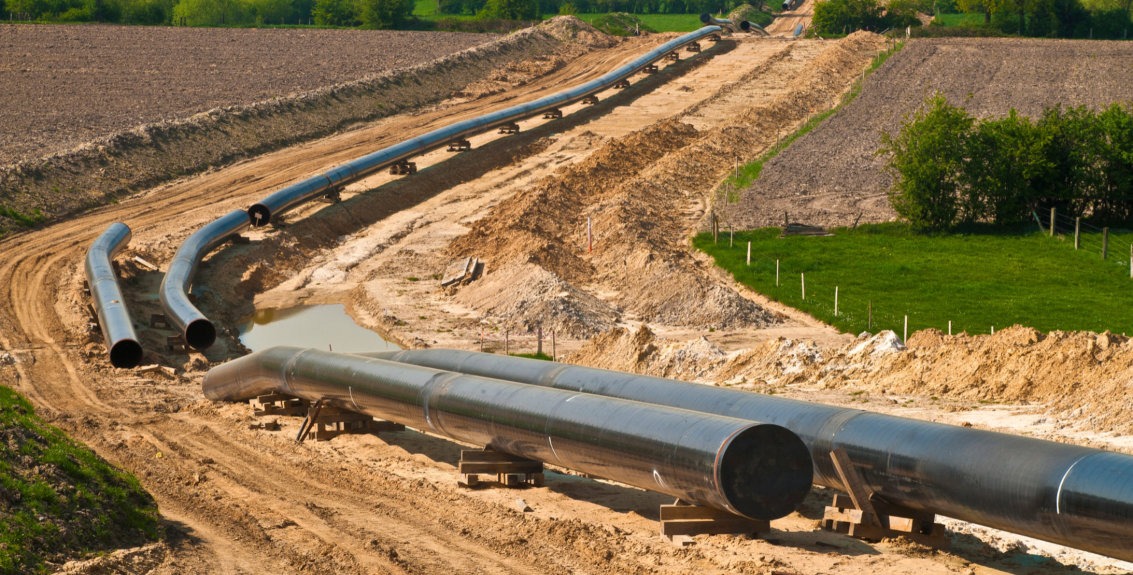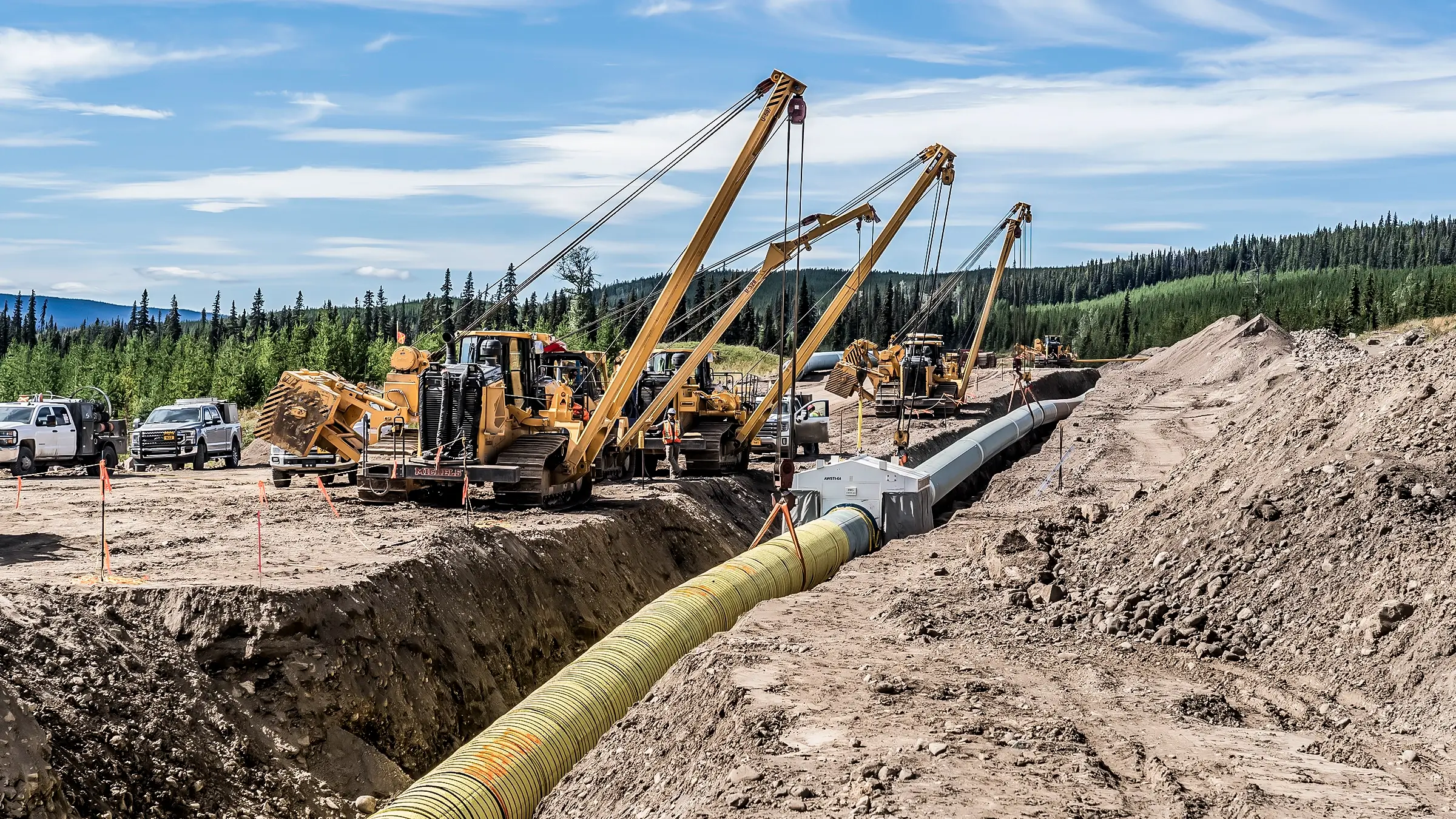Choosing the Right Pipe Materials With Help From Creek Pipe Company
Wiki Article
A Deep Dive Into Pipes Installation: Necessary Aspects and Factors To Consider for Effective Projects
Effective pipe installation is an essential element of design projects. It includes a series of elements, from material option to exact sizing and design. Each decision can notably affect the system's efficiency and durability. Comprehending these components is vital for preventing expensive blunders. Creek Pipe roustabout. As teams navigate through the complexities of installation, numerous crucial considerations arise that warrant focus. What are the essential elements that can make or break a piping project?Understanding Pipe Materials and Their Applications
When choosing pipe materials, one should think about the details applications and ecological problems they will certainly face. Different materials supply distinct buildings that accommodate different needs. As an example, PVC is light-weight and resistant to deterioration, making it perfect for water circulation systems. Conversely, steel pipelines offer stamina and toughness, ideal for high-pressure applications however might need protective coverings to avoid rust.Copper pipes are favored for pipes because of their antimicrobial properties and ease of installation, while polyethylene is typically utilized in below ground applications due to its adaptability and resistance to cracking.The choice of material additionally rests on temperature level extremes, chemical direct exposure, and installation place. For high-temperature applications, materials like CPVC or PEX can be beneficial. Ultimately, comprehending the features and limitations of each material help in making notified choices that improve system effectiveness and long life.Significance of Proper Sizing and Style
Proper sizing and layout of pipes are essential for guaranteeing ideal flow rates and lessening stress loss. These aspects likewise play a substantial function in identifying the compatibility of materials used in the installation. A methodical technique to sizing and layout can significantly enhance the performance and durability of a piping system.Effect on Circulation Rates
Circulation prices in piping systems are critically influenced by the sizing and style of the pipelines. Correctly sized pipes guarantee that the liquid can relocate successfully, decreasing disturbance and making the most of flow capability. Oversized pipes can lead to reduced circulation speeds, while undersized pipelines may limit flow, leading to increased friction and prospective obstructions. The style should additionally consider variables such as pipe product, interior surface smoothness, and design, as these add to the overall performance of liquid transportation. Additionally, the plan of installations and links within the system can influence flow rates. Careful interest to pipe sizing and layout is crucial for enhancing circulation efficiency in any kind of piping installation task.Stress Loss Factors To Consider

Exactly how can pressure loss greatly affect the performance of a piping system? Pressure loss is a crucial aspect that can substantially diminish the performance of fluid transport systems. When pipelines are incorrectly sized or made, excessive stress loss might occur, bring about lowered circulation prices and boosted power intake. This inadequacy can result in higher functional expenses and possible system failures. Correct sizing and style are important to minimize stress loss, guaranteeing that fluid dynamics stay ideal throughout the system. Designers should thoroughly think about variables such as pipe size, size, and product to achieve a reliable equilibrium. Ultimately, addressing stress loss throughout the style stage can improve integrity and durability, making it essential for effective piping tasks.
Material Compatibility Elements
Stress loss is not the only aspect that can impact the efficiency of a piping system; material compatibility also plays a considerable function in overall efficiency. Ensuring that the materials used in a piping system work with the liquids they will transport is crucial. Various materials can react detrimentally to various chemicals, causing corrosion, deterioration, or contamination. This can inevitably compromise the honesty of the system and influence its long life. Additionally, proper sizing and layout are very important to suit thermal growth and tightening, which can better influence product efficiency. Reviewing variables such as temperature, stress, and chemical structure is important in picking appropriate materials, therefore improving system reliability and lowering upkeep costs in the lengthy term.Strategies for Accurate Pipe Installation
Accurate pipe installation is essential for guaranteeing system performance and longevity. Numerous methods can improve the precision of this process. First, mindful dimension is important; installers ought to utilize quality devices such as laser degrees and measuring tape to figure out the exact sizes and angles required. Next off, correct pipe reducing strategies, like utilizing a pipe cutter rather than a hacksaw, assurance tidy edges that promote better links. Additionally, using placement devices, such as pipe jigs, can especially boost precision during setting up. It is also advisable to consider thermal development; permitting for ample spacing and growth joints can protect against future misalignments. The installation group must adhere to manufacturer standards to stick to particular recommendations related to each pipe type. By carrying out these methods, the likelihood of leakages and system failures lowers, eventually adding to a much more trusted piping system.Making Sure Pipe Placement and Support
Appropriate alignment and assistance are crucial to the honesty and efficiency of any kind of piping system. Imbalance can lead to boosted tension on joints, prospective leakages, and decreased effectiveness. To assure correct placement, it is important to make use of ideal tools such as laser degrees and placement evaluates. These instruments assist attain precise positioning, guaranteeing that pipelines are mounted in conformity with design specifications.Support systems have to be created to suit thermal development and tightening, as well as the weight of the pipes and their contents. Selecting the best kind of assistances, wall mounts, and brackets is vital. Each need to be set up at defined intervals to prevent sagging or unnecessary stress and anxiety on the pipes. Routine evaluations complying with installation can help determine any misalignments or indications of inadequate assistance. By focusing on alignment and support, one can substantially improve the durability and performance of the piping system.Usual Installation Errors to Avoid

Examining and Inspection for Quality Control
Although the installation process may appear full, extensive testing and assessment are crucial to ensuring the lasting reliability of a piping system. Various methods are used to assess the stability of the installation, including pressure tests, aesthetic evaluations, and non-destructive testing (NDT) techniques. Pressure examinations confirm that the system can withstand operational conditions without leakages, while aesthetic inspections assist identify any noticeable defects in the pipelines or joints. NDT techniques, such as ultrasonic or radiographic testing, give insights right into the product honesty without compromising the system.Additionally, documenting the testing results is necessary for future recommendation and conformity with industry requirements. This documentation serves not just as a quality control action yet additionally as a legal guard. Eventually, an extensive screening and inspection procedure contributes to the overall security and effectiveness of the piping system, guaranteeing it meets the necessary performance criteria with time.Maintenance Tips for Long-lasting Pipe Equipments
Preserving a pipe system calls for regular examinations and keeping an eye on to recognize potential concerns prior to they rise. Executing effective cleaning methods is likewise crucial for preventing accumulation that can prevent efficiency. With each other, these techniques add to the long life and reliability of the piping framework.Normal Inspections and Surveillance
Regular inspections and surveillance are crucial for making sure the longevity and effectiveness of pipe systems. Routine evaluations can assist identify potential issues such as leaks, corrosion, or blockages before they rise right into significant issues. Applying a schedule for routine evaluations enables for the early discovery of deterioration, allowing timely repairs. Surveillance stress levels and flow prices can additionally offer important insights into system performance, guaranteeing that any kind of anomalies are attended to immediately. In addition, using sophisticated innovations, such as infrared cams or ultrasonic testing, can boost the evaluation procedure by giving comprehensive info regarding pipe conditions. Eventually, constant tracking and assessments add to the integrity and longevity of pipe systems, minimizing the risk of pricey repair services and downtime.
Efficient Cleaning Up Methods
Efficient cleaning strategies are crucial for maintaining the integrity and functionality of pipe systems. Regularly set up upkeep, such as flushing systems with water, helps remove particles and accumulation. For even more persistent obstructions, specialists typically suggest hydro jetting, which makes use of high-pressure water to tidy pipe interiors thoroughly. Chemical cleansers can also be used but ought to be picked meticulously to stay clear of destructive pipes. On top of that, utilizing devices like pipe cams can assist in determining issue locations and ensuring efficient cleaning. Maintaining correct water drainage and staying clear of the disposal of unsafe substances down pipelines even more add to long life. In general, constant cleansing practices not just enhance efficiency but likewise decrease the threat of expensive repairs in the future.Regularly Asked Inquiries
What Are the Labor Prices Related To Pipe Installation Projects?
Labor prices for pipe installation jobs vary commonly, affected by elements like task complexity, local wage prices, and required skills (Creek Pipe Midland). Typically, these expenses can vary from $50 to $100 per hour, relying on the workforce includedHow Do Neighborhood Rules Affect Pipe Installation Practices?
Regional guidelines considerably affect Creek Pipe Texas oilfield pipe installation practices by establishing safety and security criteria, product requirements, and installation approaches. Conformity with these regulations assurances project security, ecological defense, and adherence to regional codes, eventually affecting general task success and prices.What Equipment Are Essential for Pipe Installation?
Vital devices for pipe installation include pipe wrenches, cutters, and fittings. Furthermore, sealers, determining tapes, and degrees ensure accuracy and toughness. Appropriate tools promotes efficiency and adherence to safety criteria during the installation procedure.Exactly How Can Weather Condition Conditions Impact the Installation Refine?
Weather substantially impact the installation procedure, as severe temperature levels, rain, or wind can affect product honesty, worker safety, and job timelines. Appropriate planning and scheduling are crucial to reduce these prospective obstacles during installation.Exist Warranties for Set Up Pipe Systems?
Guarantees for set up pipe systems typically differ by producer and installation contractor. Normally, they cover issues and craftsmanship for a given duration, making sure the system's reliability and providing satisfaction to the home owner.Report this wiki page